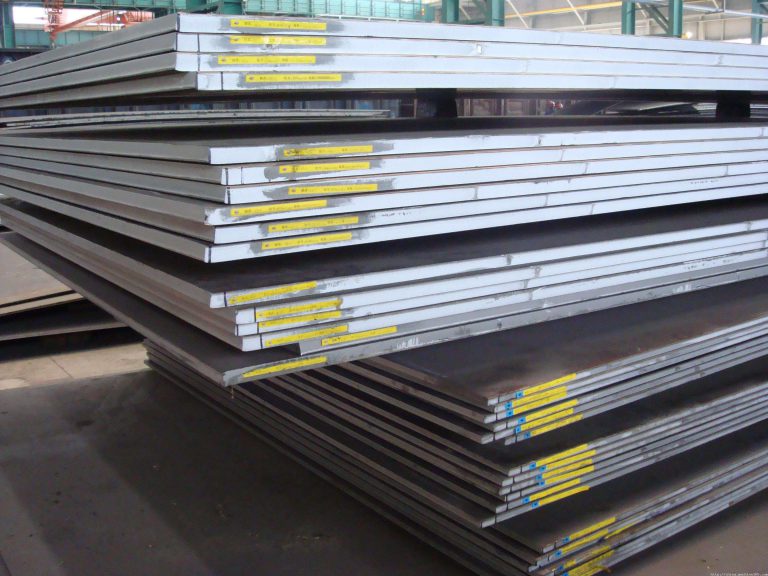sa-516 gr 70 boiler steel plate
SA516Gr.70 is widely used in petroleum, chemical, power station, boiler, and other industries used to make reactors, heat exchangers, separators, spherical tanks, gas tanks, liquefied gas tanks, nuclear reactor pressure shells, boiler drums, liquefied petroleum
Equipment and components such as gas cylinders, high-pressure water pipes of hydropower stations, and turbine volutes.
A516Gr70N meets the requirements of (ASME) ASTMA516/A516M standards, and fully meets the needs of oil gas with a high content of sulfur and hydrogen, reduces sulfur and hydrogen corrosion, reduces equipment maintenance, and increases equipment service life.
The steel plate has the following characteristics: good impact resistance, low-temperature deformation, good welding performance, good fatigue resistance, good anti-layer cracking performance, microalloying, high purity, low carbon equivalent, strong resistance to sulfur and hydrogen,
The products have good dimensional tolerances and surface quality.
We are ASME SA516 Gr.70 and ASME SA516GR.70 steel plate manufacturers,SA516GR.70 stocklist, SA516GR.70 cutting parts, SA 516 GR 70 machined parts supplier. Gangsteel exporter ASME SA516 Grade 70|ASME SA516GR.70 steel plate. SA516GR70 is a carbon pressure vessel steel grade. ASME SA516 GR.70 steel plates stock supplier.Keywords: ASME A516 Grade 70, ASME A516GR.70, ASME A516GR70, ASME A516 GR.70 SA516 Grade 70 steel is a carbon pressure vessel steel grade for moderate and lower temperature service.
SA516 Grade 70 usual request normalized if thickness above 40mm, if not, Gangsteel usual delivery in hot rolled or control rolled station. A516 Gr.70+N or A516gr70N mean that steel grade must be normalized in any thickness.

Duplex grades are usually preferred due to their corrosion resistance and better energy, permitting a discount of weight and an extended life in maritime environments. Unlike carbon steel, stainless steels don’t suffer uniform corrosion when exposed to moist environments.
Austenitic stainless-steel is the most important household of stainless steels, making up about two-thirds of all stainless steel manufacturing . They possess an austenitic microstructure, which is a face-centered cubic crystal structure.
Heat treatment
1.·SA515Gr60, SA515Gr70, SA516Gr60, SA516Gr70, SA516Gr60N, SA516Gr70N thickness ≤1.5in, (40mm) steel plate is usually supplied in rolled state, steel plate can also be ordered by normalizing or stress relief, or normalizing plus stress relief.
2. Thickness>1.5in.(40mm) steel plate should be normalized.
3. Unless otherwise specified by the buyer, the thickness ≤ 1.5in, (40mm) steel plate, when notch toughness is required, normalizing should be carried out.
4. If approved by the buyer, it is allowed to use a cooling rate greater than that in the air to improve toughness, but the steel plate only needs to be in the range of 1100-1300°F (595-705°C) subsequently
The tensile strength of SA516Gr70 is 70 kilopounds per square inch, which is more than 482 as everyone usually says.
The main element content is C Mn Si, and the control of p and s determines its performance.
There are very few other trace elements.
Standard Specification for Carbon Steel Plates for Medium and Low-Temperature Pressure Vessels
SA516Gr70 Chemical detail
C≤0.30��Mn��0.79-1.30��P≤0.035��S��≤0.035��Si��0.13-0.45
SA516Gr70 Property Grade U.S (SI), Tensile strength ksi(MPa) 70 (485) and 70-90 (485-620)
ASME sa 516 gr 485
- Resistance to different gases depends on the type of fuel, the temperature, and the alloying content of the stainless-steel.
- The minimal 10.5% chromium in stainless steels supplies resistance to approximately seven-hundred °C (1,300 °F), while 16% chromium supplies resistance as much as approximately 1,200 °C (2,200 °F).
- Stainless steel is now used as one of the materials for tramlinks, along with aluminium alloys and carbon steel.
- Other gases, similar to sulfur dioxide, hydrogen sulfide, carbon monoxide, chlorine, additionally attack stainless steel.
- Type 304, the most common grade of stainless-steel with 18% chromium, is immune to approximately 870 °C (1,600 °F).
Post-weld heat therapy is nearly always required whereas preheating earlier than welding can be essential in some cases. Type 304 and Type 316 stainless steels are unaffected weak bases corresponding to ammonium hydroxide, even in excessive concentrations and at high temperatures. The same grades exposed to stronger bases corresponding to sodium hydroxide at excessive concentrations and excessive temperatures will doubtless expertise some etching and cracking. Increasing chromium and nickel contents present elevated resistance.
These alloying parts are added to offer A36 metal its desired chemical and mechanical properties. Since A36 doesn’t include giant amounts of nickel or chromium, it does not have glorious corrosion resistance. Stainless steels have a long sa516gr.70 steel supplier historical past of software involved with water due to their wonderful corrosion resistance.
What is the hardest steel?
A. The major differences between 202 and 304 stainless steels are in the nickel and chromium contents. 202 has 16-18% chromium and 0.5-4.0% nickel, whilst 304 has 18-20% chromium and 8-10.5% nickel. The manganese helps preserve the austenitic phase in the steels, as does the nickel.
An instance is the corrosion of aluminium rivets fastening chrome steel sheets in contact with water. All forms of stainless-steel resist assault from phosphoric acid and nitric acid at room temperature. At excessive concentrations and elevated temperatures, assault will happen, and better-alloy stainless steels are required. 1.1 This specification covers nominal wall seamless and welded carbon and alloy steel pipe intended for use at low temperatures.
The minimum 10.5% chromium in stainless steels provides resistance to approximately 700 °C (1,300 °F), whereas 16% chromium offers resistance up to roughly 1,200 °C (2,200 °F). Type 304, the most common grade of stainless-steel with 18% chromium, is resistant to roughly 870 °C (1,600 °F). Other gases, similar to sulfur dioxide, hydrogen sulfide, carbon monoxide, chlorine, also attack chrome steel. Resistance to different gases is dependent on the kind of gasoline, the temperature, and the alloying content material of the stainless-steel. Stainless metal is now used as one of many materials for tramlinks, together with aluminium alloys and carbon steel.
